White butterflies can be a real nuisance in the garden. They seem to come out of nowhere and can quickly overrun your plants! If you’re looking for ways to get rid of white butterflies, you’ve come to the right place. In this article, we will answer some common questions about these pests and provide you with some helpful tips on how to get rid of them.
Identification
The first step to getting rid of white butterflies is to correctly identify the type of butterfly you are dealing with. There are many different types of white butterflies, but the two most common ones in gardens are the cabbage white (Pieris rapae) and the small white (Pieris napi).
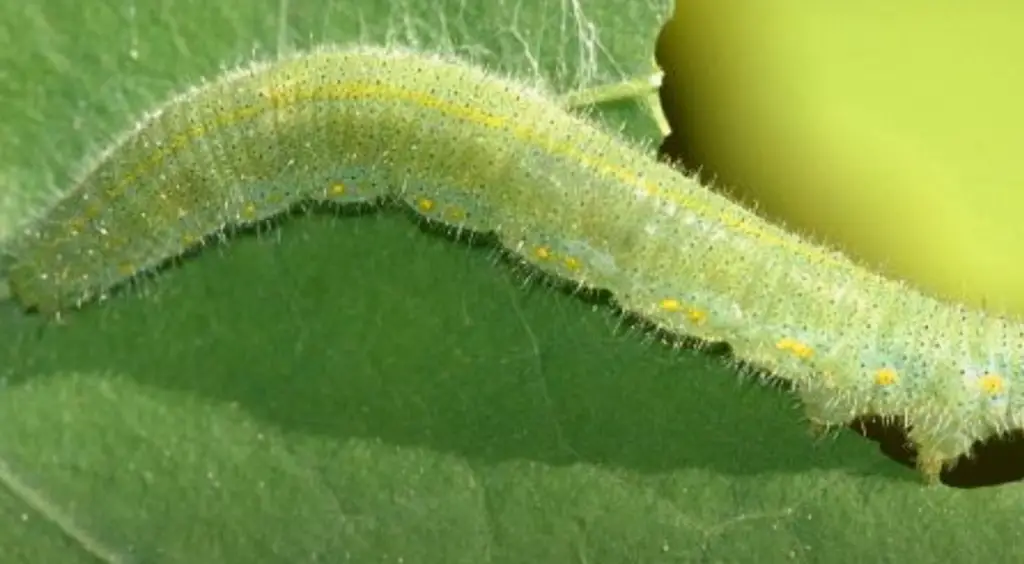
Cabbage whites are larger than small whites and have a distinctive black dot on their wings. Small whites, on the other hand, do not have any markings on their wings. Once you have correctly identified the type of butterfly you are dealing with, you can move on to the next step.[2]
What do they eat?
White butterflies feed on a variety of plants, including vegetables, fruits, and flowers. They particularly enjoy eating cruciferous vegetables like cabbage, broccoli, and cauliflower.
If you want to get rid of white butterflies, you will need to remove their food source. This can be done by removing any infested plants from your garden and disposing of them properly. You should also avoid planting cruciferous vegetables in areas where white butterflies are active.[2]
Large and Small Cabbage White Butterflies
The cabbage white butterfly is a common pest in gardens. The butterfly is small with a wingspan of only about an inch. The upper side of the wings is white with black spots, while the undersides are pale yellow with black and brown markings. Females have two black spots on their hindwings, while males have only one.
These butterflies lay their eggs on the undersides of leaves of plants in the mustard family such as cabbage, kale, and collards. When the eggs hatch, the caterpillars feed on the leaves of these plants causing damage to the plant.
Signs that you have a cabbage worm problem
If you notice any of the following signs in your garden, it’s likely that you have a cabbage worm problem:
- Tiny green or brown caterpillars crawling on your plants
- Holes in the leaves of your plants
- Plants that are wilting or yellowing
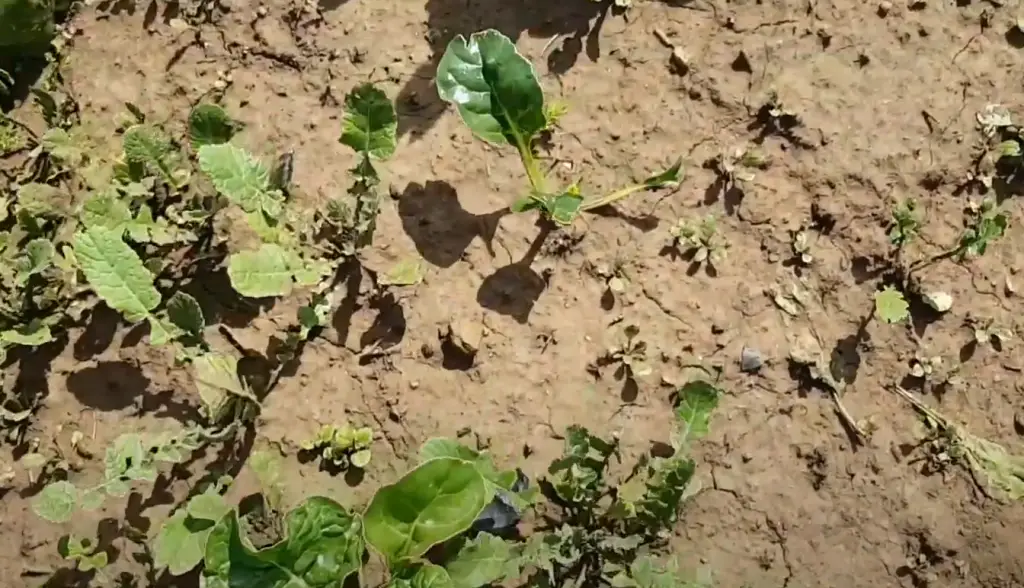
If you see any of these signs, it’s time to take action to get rid of the cabbage worms. Read on for our comprehensive guide on how to get rid of white butterflies in the garden.[3]
How to prevent cabbage white butterflies from moving in
To keep cabbage white butterflies from making your garden their home, start with these tips:
- Keep your garden clean. Remove debris where the butterflies can lay their eggs.
- Plant mustard and nasturtiums. These plants release a chemical that deters the butterflies.
- Till the soil regularly. This will disrupt the life cycle of the butterfly and make it difficult for them to lay their eggs.
- Use row covers. Row covers are a physical barrier that will prevent the butterflies from getting to your plants.
With these tips, you can keep cabbage white butterflies from taking over your garden!
Natural Control Methods
If you’re looking for a more natural way to get rid of white butterflies in the garden, there are a few things you can try.
One is to plant certain types of plants that white butterflies don’t like. These include: basil, marigolds, nasturtiums, and petunias. You can also try using a homemade spray made with water and dish soap. Simply mix together equal parts water and dish soap, and spray it on the leaves of your plants. This will kill any white butterflies that land on the sprayed leaves.
Another method is to release predators into your garden. Ladybugs are a good option, as they eat white butterfly larvae. You can also purchase them online or at your local garden center.[2]
Decoy Plants for White Cabbage Butterfly
One way to deter white cabbage butterflies from laying their eggs on your plants is to plant decoy plants. The caterpillars will mistake these plants for their usual food source and will lay their eggs on them instead. Some good decoy plants for white cabbage butterflies include nasturtiums, mustard greens, and radishes. You can also try planting some herbs like basil, oregano, or thyme.
Another way to deter white cabbage butterflies is to plant some of their natural predators in your garden. Ladybugs, lacewings, and parasitic wasps are all enemies of the white cabbage butterfly and will help keep their population under control. You can purchase these beneficial insects online or at your local nursery.
You can also try making a homemade insecticide to get rid of white butterflies in the garden. Mix equal parts water and vinegar in a spray bottle and add a few drops of dish soap. Shake well and spray liberally on any white butterflies you see. This homemade insecticide will kill them on contact.[1]
Using Dipel to Control White Cabbage Butterfly
Dipel is a biological insecticide that contains Bacillus thuringiensis, a bacteria that’s poisonous to caterpillars. It works by paralyzing the caterpillar’s digestive system so they can no longer feed. Dipel can be purchased in powder or liquid form and is mixed with water before being sprayed on plants. It’s most effective when applied when caterpillars are young and actively feeding.
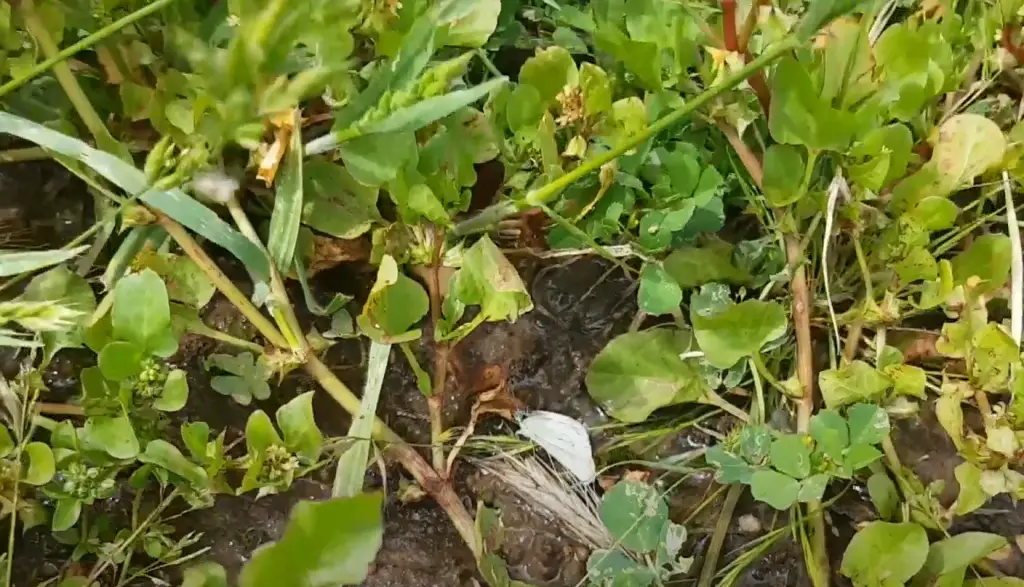
To use Dipel:
- Mix the appropriate amount of Dipel with water in a sprayer according to the package directions.
- Spray the mixture on infested plants, making sure to cover both the tops and undersides of leaves where caterpillars are likely to be feeding.
- Reapply after rain or as needed to maintain control.
Dipel is safe to use around people and animals, but should be used with caution around beneficial insects like bees since it will kill them if they come in contact with it.
If you have a serious caterpillar problem, you may need to apply Dipel more than once to get rid of them all. Caterpillars can hatch throughout the growing season, so it’s important to be vigilant and reapply the insecticide as needed. You may also need to treat your plants multiple times if white butterflies keep laying eggs on them.[1]
Search and Destroy Missions for White Cabbage Butterfly
Hand-picking and destroying the eggs is one of the most effective ways to get rid of the white cabbage butterfly. Check your plants regularly for small, white eggs on the undersides of leaves and pick them off by hand. You can also use a strong stream of water from a hose to knock them off onto the ground where you can then crush them.
If you have a serious infestation, you may need to cut down all infected plants and start over again from scratch. This is a drastic measure but if nothing else has worked, it may be your only option. You should also dispose of any affected plant material in sealed bags so that the butterflies cannot lay their eggs on them again.[1]
Allowing Parasitic Wasps to control White Cabbage Butterfly
There are a number of parasitic wasps which can be used to control white cabbage butterfly populations. Trichogramma brassicae is a tiny wasp that parasitizes the eggs of the white cabbage butterfly. This wasp is available commercially and can be released in the garden at the beginning of the season. Another parasitic wasp, Cotesia glomerata, parasitizes the caterpillars of the white cabbage butterfly. This wasp is not available commercially but can be purchased online from various suppliers.
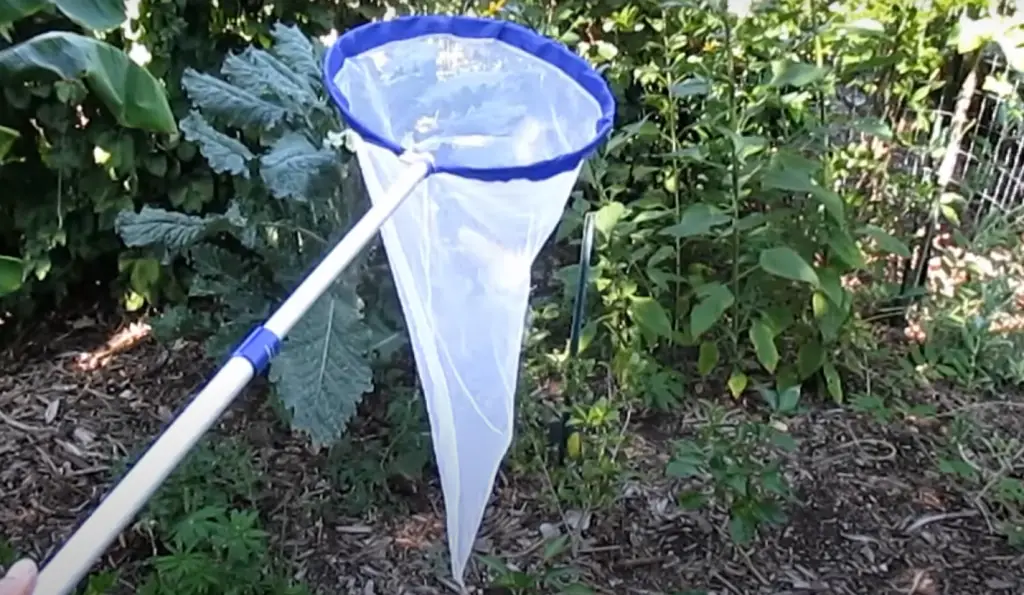
To allow these natural predators to do their job, avoid using insecticides in your garden as they will kill both the good and bad insects. Instead, focus on creating a habitat that is attractive to these beneficial insects. Plant a variety of flowers that will provide nectar for the adult wasps as well as host plants for the caterpillars. Some good options include sweet alyssum, calendula, cosmos, dill, fennel, and nasturtiums.[1]
Decoys for White Cabbage Butterfly
Netting
One of the most effective ways to keep white cabbage butterflies away from your plants is to use netting. This will create a physical barrier between the butterflies and your plants, preventing them from laying their eggs on the leaves. You can find netting at most hardware stores or online.
Another way to deter white cabbage butterflies is to use decoys. You can purchase these online or make your own by painting rocks or sticks white. Place the decoys around your garden, and the butterflies will be fooled into thinking there are other places to lay their eggs.
You can also try using both methods together for even more protection! Just be sure to check the netting regularly for holes and repair them as needed.[1]
Or, Just Wait for the Cold Weather!
If you don’t want to take any drastic measures, you can always just wait for the cold weather. White butterflies are not equipped to survive in freezing temperatures, so a few nights of frost will kill them off. This is obviously not an ideal solution if you have other plants in your garden that are susceptible to frost damage, but it is an option!
Another way to reduce the population of white butterflies in your garden is to remove their food source. If you have any weeds or other plants that they like to lay their eggs on, get rid of them. This won’t completely solve the problem, but it will help.[1]
How to Spray to Get Rid of the Cabbage White Butterfly
The best way to get rid of the cabbage white butterfly is to spray them with an insecticide. You can use a chemical insecticide or a natural one. If you use a chemical insecticide, make sure to follow the directions on the label. If you use a natural insecticide, you can find recipes online.
To make your own insecticide, mix together water and dish soap.
Hand removal
This is the most common method of getting rid of white butterflies in the garden. You can simply pick them off by hand and throw them away. This method is effective, but it can be time-consuming depending on the size of your garden.
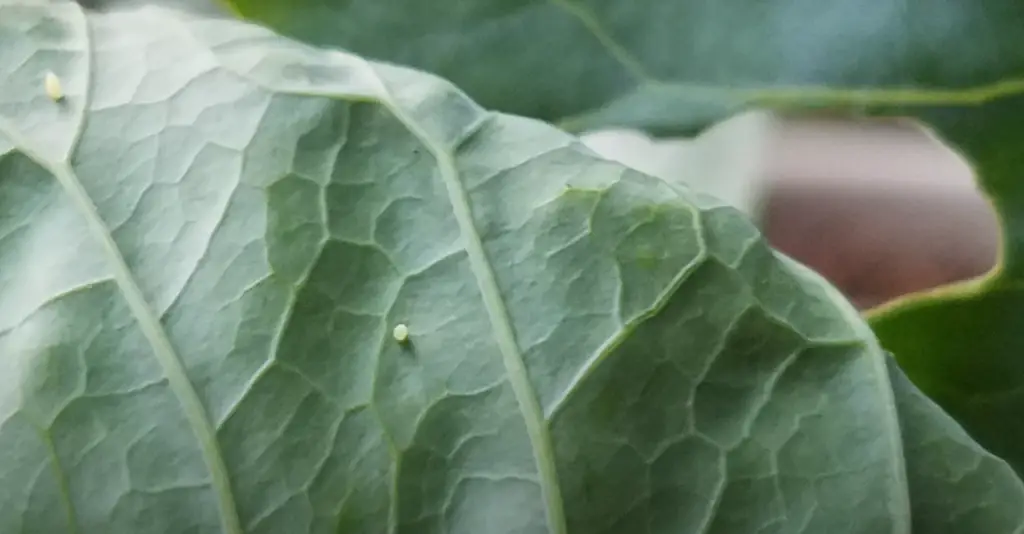
If you have a small garden, you can manually remove all the white butterflies yourself. But if you have a large garden, it might be best to hire someone to help you with this task.[4]
Plant land cress as a companion plan
White butterflies are attracted to the nectar of land cress, but they don’t lay their eggs on the plant.
If you have a serious infestation, you may need to plant more than one type of butterfly-attracting plant to really make a difference.Other plants that white butterflies are attracted to include: yarrow, sweet alyssum, and cosmos. You can find seedlings of these plants at most garden centers. Just be sure to plant them in an area where they won’t crowd out your other plants![4]
FAQ
How do I keep butterflies out of my garden?
There are a number of things you can do to keep butterflies out of your garden, including:
Planting butterfly-repelling plants: Some plants that repel butterflies include marigolds, petunias, and lavender.
Creating a butterfly-friendly environment: You can attract predators like bats and birds to your garden by creating a habitat that is friendly to them. This will help keep the population of butterflies in check.
Use netting: Covering your plants with netting is an effective way to keep butterflies from being able to reach them. Be sure to choose a mesh size that will allow pollinators like bees through while keeping butterflies out.
Why are there so many white butterflies?
There are a few reasons why you might be seeing an influx of white butterflies in your garden. One possibility is that the weather has been particularly warm and dry, which can lead to an increase in butterfly populations. Another possibility is that there’s a food source nearby that’s attracting them to your garden (more on that later).
Whatever the reason, if you’re finding that white butterflies are becoming a nuisance, there are a few things you can do to get rid of them. Read on for our comprehensive guide on how to get rid of white butterflies in the garden.
Are white butterflies good for your garden?
No, white butterflies are not good for your garden. The larvae of these butterflies feed on the leaves of plants, which can cause damage to your plants. In addition, the adult butterflies can spread diseases to your plants. If you have a white butterfly infestation in your garden, it is important to take steps to get rid of them as soon as possible.
What damage do white butterflies do?
White butterflies are actually a type of moth and they are capable of doing a lot of damage to your garden. The caterpillars of these moths feed on the leaves of many different types of plants, including vegetables, fruits, and flowers. This can cause the leaves to turn brown and die. In severe infestations, the caterpillars can completely defoliate a plant. White butterflies also spread diseases as they feed on the plants.
How long do the white butterflies live?
The white butterflies have a lifespan of about two to three weeks. The adult butterflies will lay their eggs on the leaves of plants, and the larvae will hatch and feed on the leaves. When they are ready to pupate, the larvae will spin a cocoon around themselves and transform into adults.
How common are white butterflies?
White butterflies are actually quite common, and can be found in gardens all over the world. In fact, they’re so common that many people don’t even realize they have a problem with them until it’s too late!
If you’re noticing white butterflies fluttering around your garden, or if you see caterpillars munching on your plants, then it’s time to take action. Read on for our comprehensive guide on how to get rid of white butterflies in the garden.
Useful Video: Eliminate Cabbage Worm & Cabbage Butterfly In The Garden | Organic Pest Control | Pieris rapae
Conclusion
Thanks for reading! We hope you found this article helpful. Remember, the best way to get rid of white butterflies in the garden is to take preventive measures and be patient. If you have any questions or tips of your own, please share them in the comments below!
Have a great day!
References:
- https://www.leafrootfruit.com.au/white-cabbage-moth/
- https://mykitchengarden.com/blog/organic-controls-for-cabbage-white-butterfly/
- https://www.attainable-sustainable.net/cabbage-whites/
- https://sophiespatch.com.au/2018/07/05/cabbage-white-butterflies/








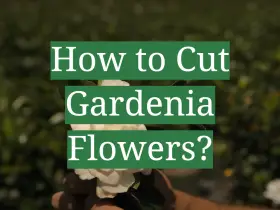
Leave a Reply
View Comments